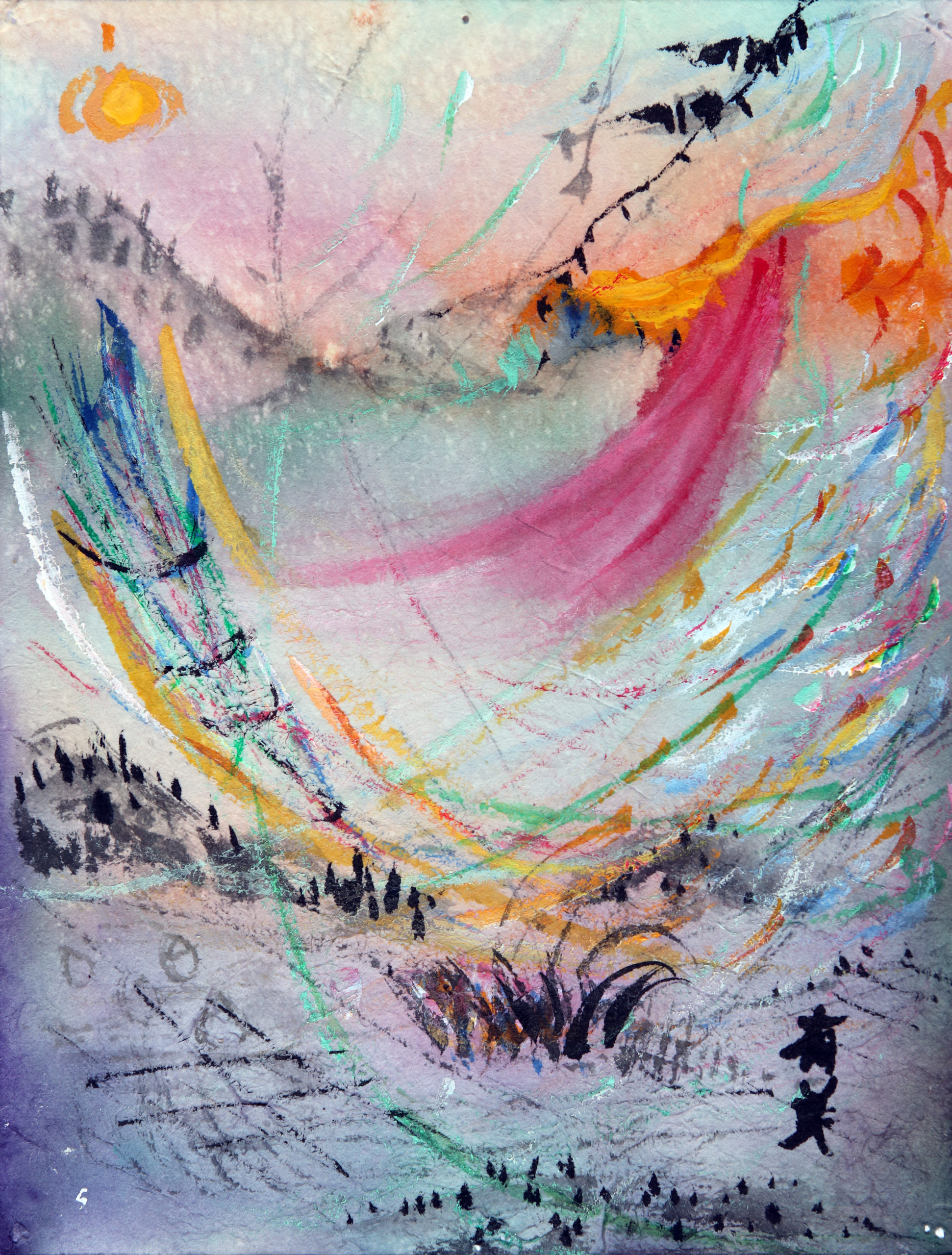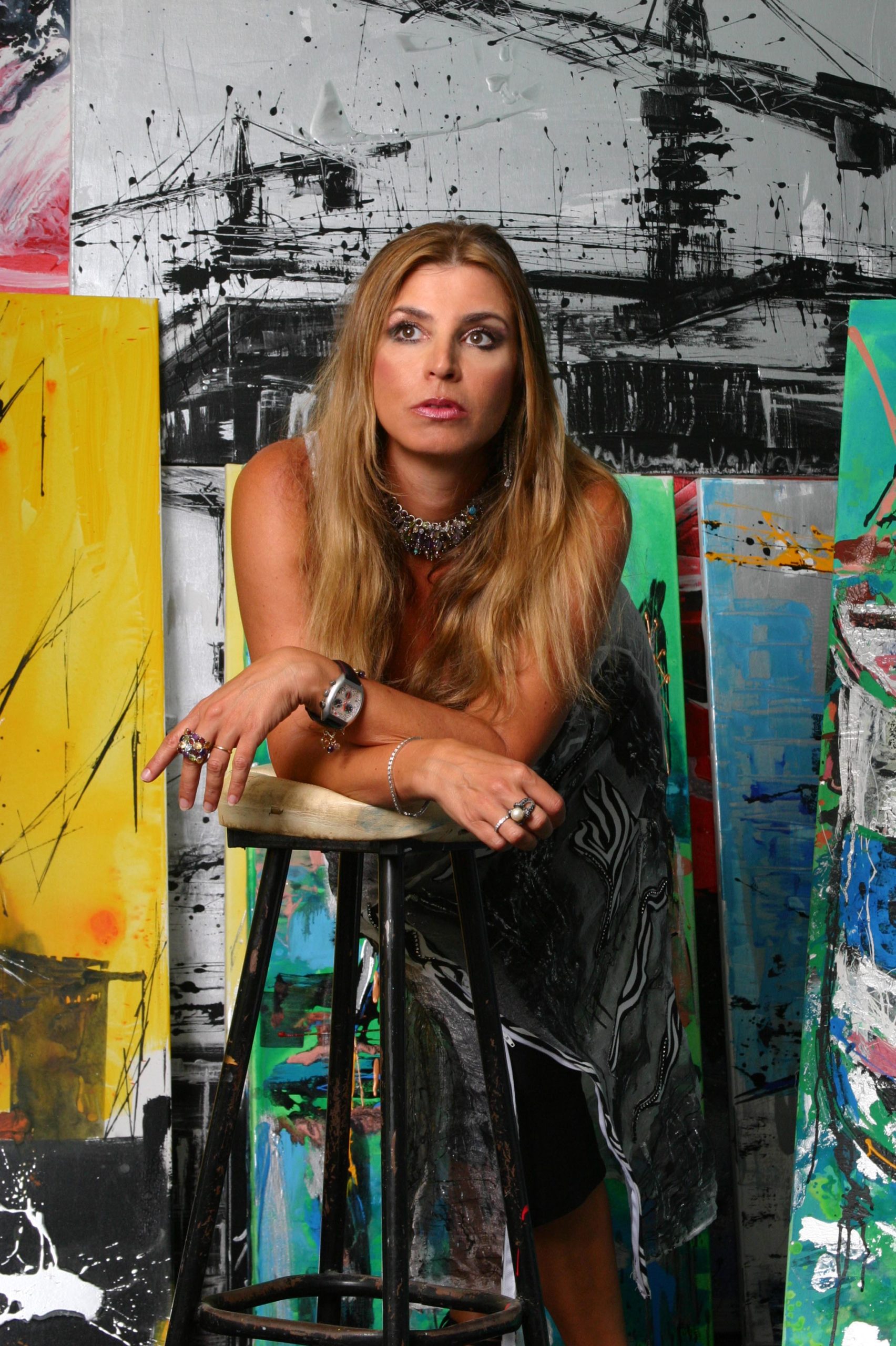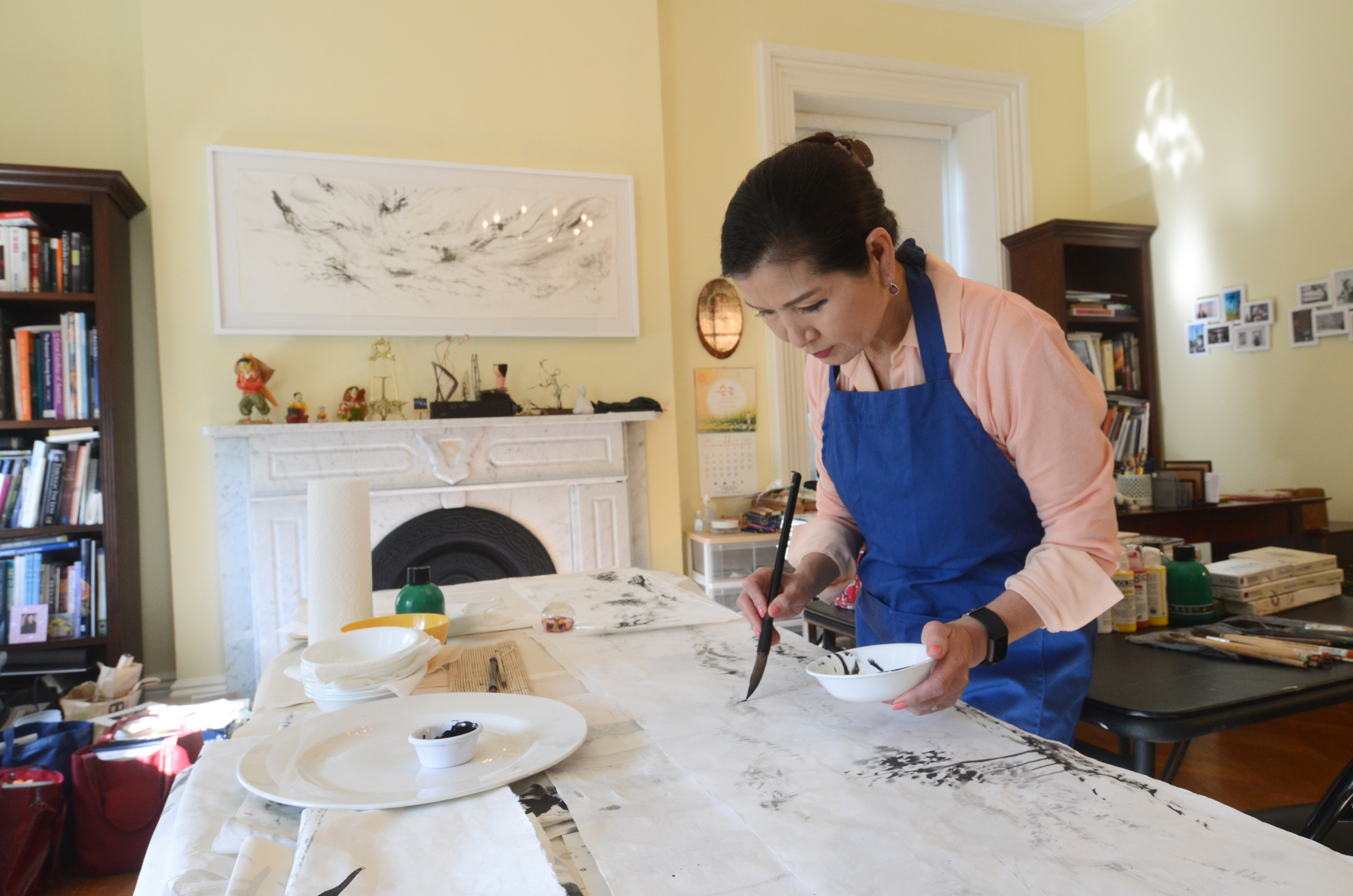Maryland’s First Lady, Greek Artist Exhibit Together




By Susan Nolan
Their styles are vastly different.
Artist and Maryland First Lady Yumi Hogan uses sumi ink and soft colors to create ethereal landscapes on traditional Asian rice paper, hanji paper made of bark, and traditional canvases. Her work is light and delicate, like a gentle breeze or a cleansing rain pulling viewers into the vastness of the forest, the mountains, the land itself. Born and raised in South Korea, she draws her inspiration from memories of growing up on a farm the youngest of eight and being immersed in nature. “The landscape here in Maryland is not unlike my home as a child,” she explains. “Trees, mountains, flowers, all four seasons, it’s all very similar.”
Bold colors and powerful brush strokes on large canvases define Greek artist Mina Papatheodorou-Valyraki’s work. She does not limit her landscapes to the natural world, but includes heavy, metal industrial cranes and modern windmill farms among her subjects. World renown for her work as a sports artist, she creates both movement and stillness with color and texture. “Human beings are a part of nature,” she states, “It’s about our impact on nature, how we interfere with nature and how we influence it.”
Yet, the work of these two artists have been brought together in a joint exhibition—Women in the Arts: A Dialogue about Nature & Environment—currently on display at Maryland Hall in Annapolis through June 24. Previously, the pair’s work was shown together in Athens, Greece, in 2019. Both artists have works in the permanent collection of the Women in The Arts Museum in Washington, D.C.
The shared vision for the exhibit began in the winter of 2017 when the artists were first introduced to each other by Climis Lascaris, a Virginia-based interior designer and art dealer. As Valyraki and Hogan collaborated, the exhibition grew to include 45 pieces of artwork and their friendship developed.
“We felt an immediate connection,” Valyraki says, “and I knew we should work together. We share an interest in nature and the environment and we express that through our work. It is the common language that connects us.”
“It is my hope that her European interpretation and my Asian interpretation of nature and the environment will inspire others and encourage an even more robust exchange of art and culture,” says Hogan.
The Maryland Hall installation is open to the public and free of charge.
